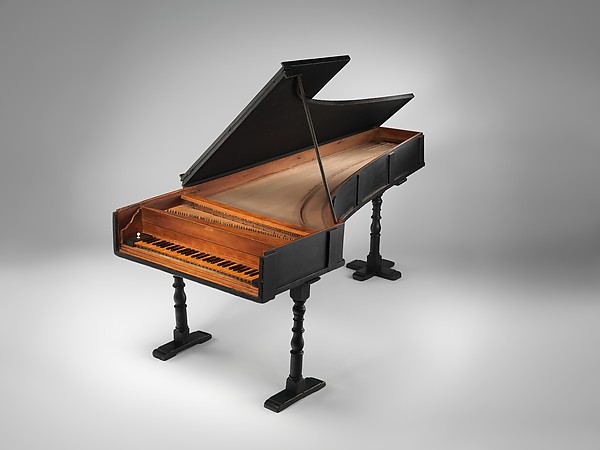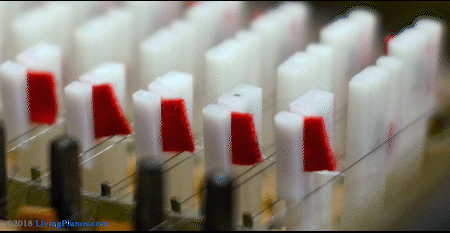This is a very interesting question that doesn’t have a simple answer. The origin of the piano goes back centuries, and while there is some widely held beliefs on the subject, the story of the piano is a lot more complex than you might think.
Undoubtedly the name you will hear most when it comes to the creation of the first piano would be Bartolomeo Cristofori. Cristofori was an Italian harpsichord builder. At the tail end of the 1600’s he tried his hand at making a Harpsichord that could play both loud and soft from touch. He called his instrument, “Cimbalo di Piano e Forte” which translates, “Harpsichord with Soft and Loud”. Eventually, the name was shortened to “The Piano”. If you were to see one of these early instruments built by Cristofori, you would discover that it has more in common with a harpsichord than a modern piano!

Image Courtesy of The New York Metropolitan Museum of Art
So what separates this instrument from other harpsichords he produced? What makes it a piano?
For anyone familiar with the Harpsichord, you know that it lacks dynamic range from touch alone. You can play a key hard or soft and it will produce the same volume. This has to do with how the instrument plays a string: The harpsichord plucks the strings as opposed to a piano action which has hammers striking strings.
Harpsichord Plucking a String

Piano Hammer Striking a String

In order to create the dynamics needed, Cristofori invented a primitive piano action. A hammer would strike the string and you would be able to play dynamically – thus creating a range of expression birthing the idea behind the instrument we know today as the piano.
As time went on there were many advancements to piano design. New technologies were created and implemented. The birth of the modern piano is much more of an amalgamation over time than a single instrument created on a specific date.
It wasn’t until the mid 19th century that we saw the origins of the piano we know today. And even composers in the mid-19th century like Chopin and Liszt were writing pieces that we play on modern pianos that were written for instruments that were somewhat more primitive than the pianos we have today. The development of cross stringing hadn’t been adopted widely yet. Piano actions also continued with many refinements of technology. There were hundreds of improvements that came about throughout centuries.
Around the end of the 19th century is when we really began to see the modern piano as we know today. By the 1870’s and 1880’s Steinway was producing fully modern pianos. The models of Steinway pianos produced during the 1880’s have the same basic scale design as pianos they are building today with a number of technical refinements.
To sum up this incredibly deep and complex topic:
The original instrument considered to be a piano was created at the very end of the 1600’s.
The modern piano was available from select manufactures towards the end of the 1800’s.
If you have any questions about this topic or any others, please contact us at: Info@LivingPianos.com (949) 244-3729



